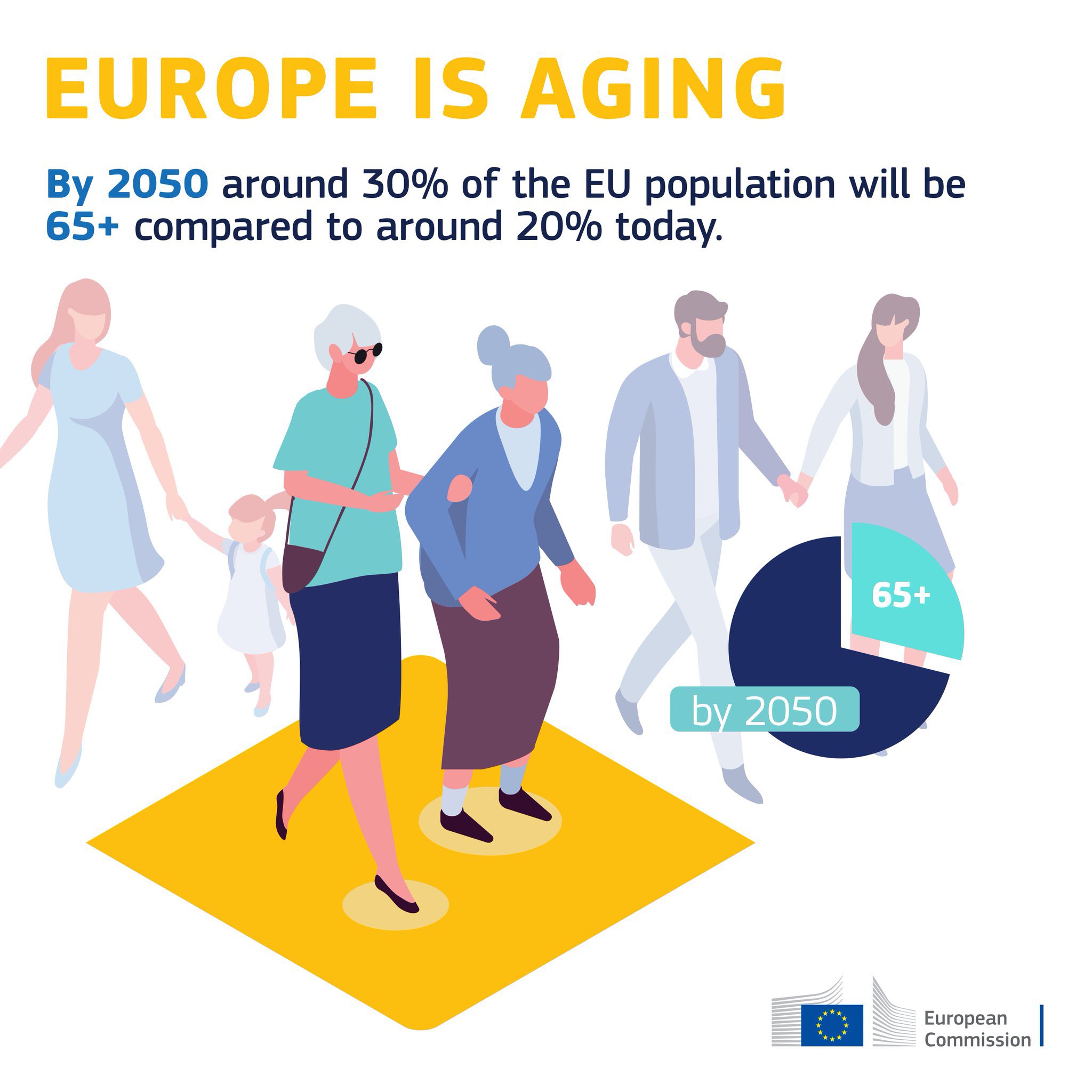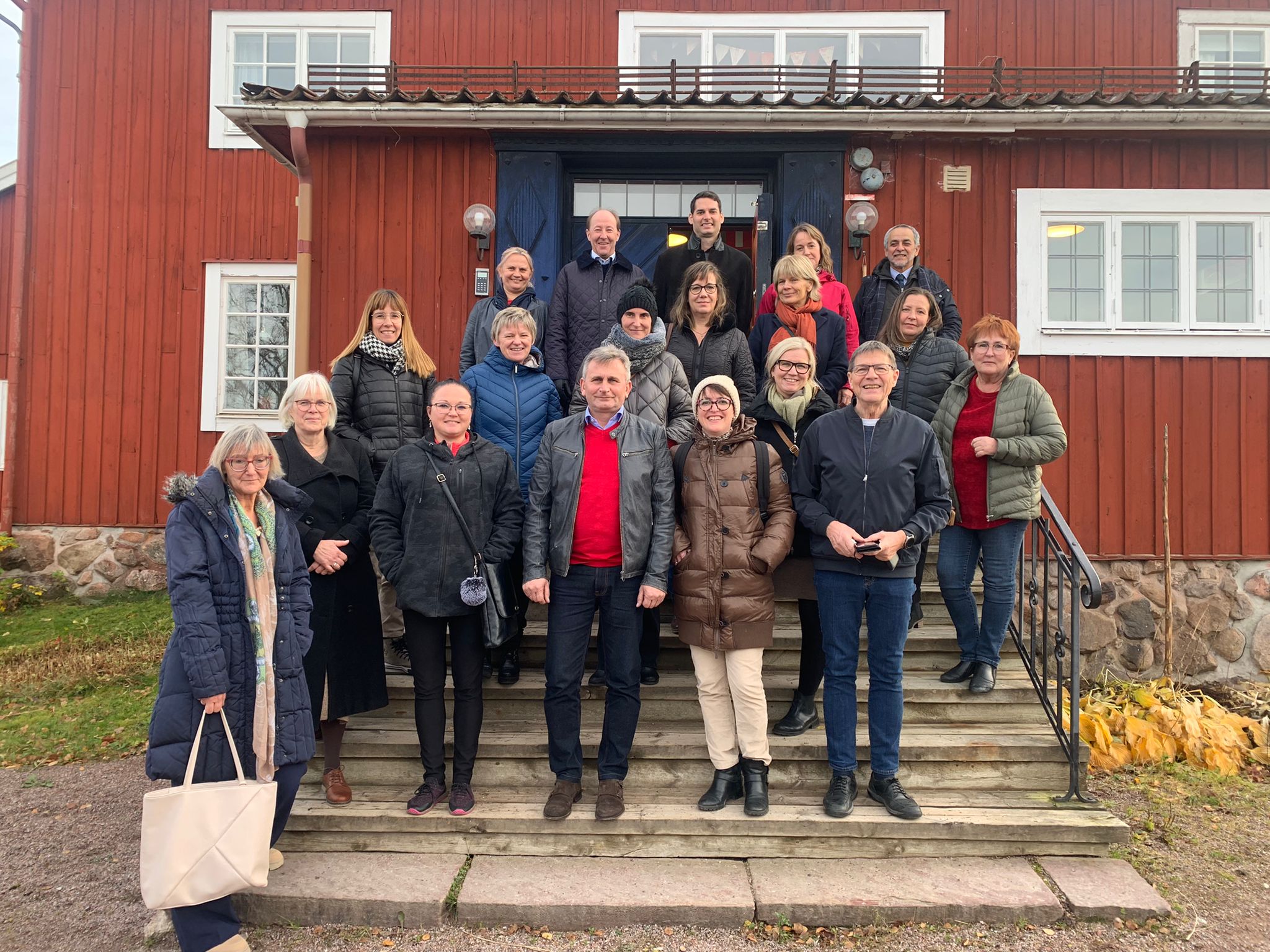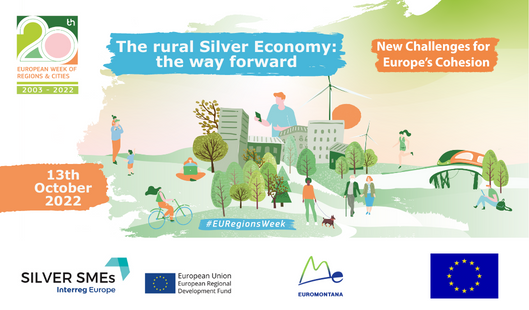In the post COVID-19 pandemic context, combined with demographic change, the European Commission has published its new EU care strategy. The strategy aims to ensure access to quality care for citizens, in particular in respect to childcare and elderly care.
In its Communication, the European Commission highlights that “rural and remote areas and regions with low population density are particularly affected by the lack or shortage of available care services”. The lack of care services, like long-term care for older adults, creates social and territorial inequalities. Deprived of local quality care services, many older adults can only choose between informal care, often provided by the family, or leaving their village for a care residence in a city.
Solutions to improve care in rural areas
The European Commission's Strategy does not mention the Silver Economy sector as such, but various solutions are associated with it. The document reports that some options for rural areas have started to expand in Europe, such as home care and community-based care. Since the beginning of our SILVER SMEs project, many experiences of these types have indeed been observed, from the CoNSENSo project working with community nurses in the Alps to the recently launched initiative “A Gusto En Casa” in the Castilla y León region (Spain) which aims at developing tailored-made home care services for rural older adults.
In addition, the European Commission underlines the important role played by social economy companies, especially in more remote areas, and encourages its development. The social economy is very much linked, in some territories, to the Silver Economy. The social entrepreneurship programme of the Aragon region (Spain) has shown that out of the 30 companies created thanks to the programme, 11 work in the Silver Economy sector.
The Communication also stresses the potential of digital tools in providing care services in rural areas, for instance through telecare and assistive technology at home. Such technologies are especially relevant in mountain areas, where changes in altitude can affect vulnerable people’s health and may change their medical records. These tools are opportunities for SMEs in the Silver Economy; but companies will need support in the future to promote their products, as proposed by the Smarter Homes show flat in the region Dalarna (Sweden). Yet, the European Commission points out that such technologies also require training in digital skills and improved connectivity in rural and remote areas.
Inspiration and funding
Various solutions can match different territorial specificities. Therefore, the European Commission encourages governments to use the tools from the EU Long-Term Vision for Rural Areas to get inspiration from other rural territories, such as the Rural Observatory and the EU Rural website – which will soon be launched.
The European Commission also highlights that many different funds could provide resources to improve long term care in rural areas, such as the European Agricultural Fund for Rural Development (EAFRD), the European Regional Development Fund (ERDF), the European Social Fund Plus (ESF+) the Digital Europe programmes and more. In addition, the Recovery and Resilience Facility (RRF) can finance reforms and investments in the context of the recovery from the COVID-19 pandemic.
Examples of innovative and high quality long-term care residences in rural areas, like the Gullogården cooperative residence in the region Dalarna (Sweden), are also available in our good practice database and in our good practice brochures.











